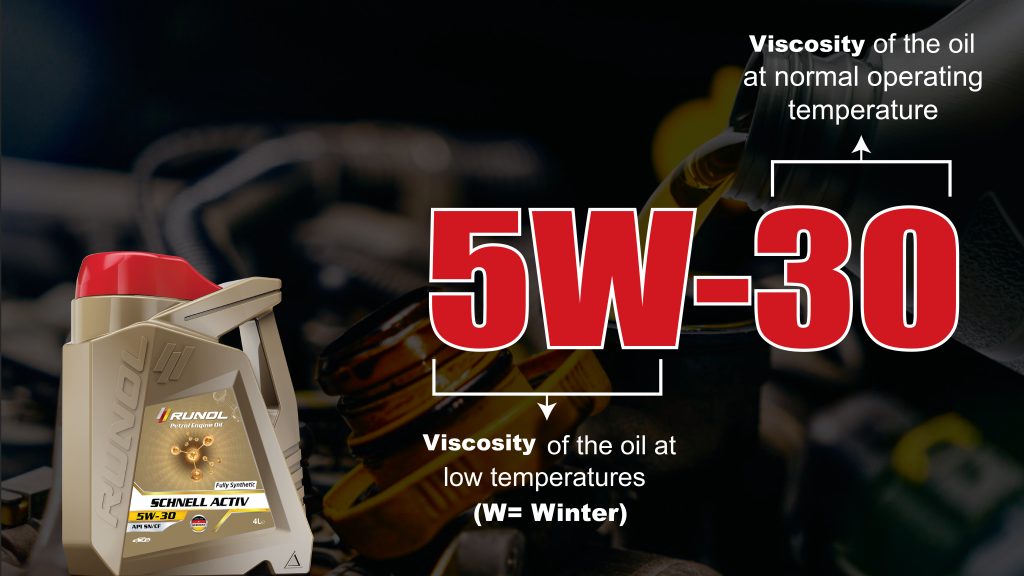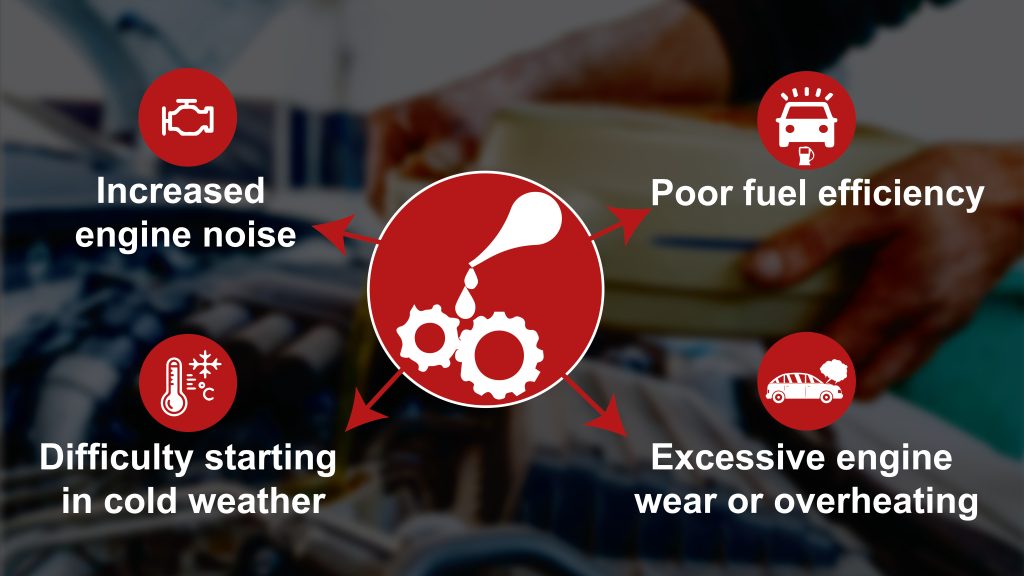Understanding Oil Viscosity: A Guide to Choose the Perfect Oil for Your Vehicle
runol_admin
March 10th, 2025
Your vehicle’s engine is a complex machine that relies on lubrication oil to operate smoothly. One of the essential factors in maintaining engine health is choosing the right engine oil, and understanding oil viscosity. In this blog, let us learn about what oil viscosity is, how to interpret viscosity grades, and how to select the perfect oil for your vehicle.
What is Engine Oil Viscosity?
Oil viscosity is a measure of an oil’s resistance to flow. Think of it as the oil’s thickness:
- High viscosity oil is thicker and the flow is slower.
- Low viscosity oil is thinner and flows easily.
The oil viscosity of engine oil changes with temperature. At lower temperatures, oil tends to thicken, and at higher temperatures, it thins out.
How to Read an Oil Viscosity Grade?

The first number before the “W” defines the oil’s viscosity at low temperatures. A lower number like 0W or 5W means the oil flows better in cold conditions, which is important as cold starts.
The second number after the “W” defines the oil’s viscosity at high temperatures. A higher number like 30, 40, or 50 means the oil maintains its thickness under heat, offering better protection.
Why is Viscosity Important?
Oil viscosity impacts engine performance and protection. Here are the important keys:
- Cold Weather Performance: In colder temperatures, oil can thicken and may not flow freely. Low-viscosity oil ensures the oil reaches engine components quickly during cold starts, reducing wear and tear.
- High-Temperature Protection: At high operating temperatures, oil can thin out. High-viscosity oils provide a thicker film that protects engine components from friction and heat damage.
- Fuel Efficiency: Low viscosity oil reduces internal engine friction, which can improve fuel economy.
How to Choose the Right Oil for Your Vehicle?
Choosing the perfect oil requires considering several factors:
1. Check Your Vehicle Manual
Your vehicle’s manufacturer provides specific recommendations for oil viscosity. These recommendations ensure optimal engine performance and longevity.
2. Consider the Climate
- In colder climates, choose oils with a lower W rating for better cold-start performance.
- In hotter climates, oils with a higher second number provide better protection against heat.
3. Account for Driving Habits
- For frequent short trips, a low-viscosity oil helps the engine reach operating temperature faster.
- For off-road driving or high-performance applications, a higher-viscosity oil offers extra protection.
4. Engine Age and Mileage
- Older engines may benefit from higher-viscosity oils or high-mileage formulations that contain additives to reduce leaks and oil consumption.
- Modern engines often require low-viscosity synthetic oils for optimal efficiency.
Synthetic vs. Semi Synthetic Oil :
Synthetic Oil :
Engineered for superior performance, synthetic oils resist extreme temperatures, reduce engine deposits, and offer longer-lasting protection. They’re ideal for modern engines or harsh driving environments.
Semi Synthetic Oil :
A combination of synthetic and mineral oils, semi synthetic blends offer a balance between performance and affordability.
Signs You’re Using the Wrong Oil
Using the wrong oil can cause noticeable issues, including:
- Increased engine noise
- Poor fuel efficiency
- Difficulty starting in cold weather
- Excessive engine wear or overheating

Tips for Choosing the Perfect Oil
- Opt for high-quality oil from Runol.
- Stick to the viscosity grade recommended in your owner’s manual.
- Regularly check and change your oil as per the manufacturer’s schedule.
By understanding oil viscosity and making informed choices, you can keep your engine running smoothly and efficiently for years to come.









